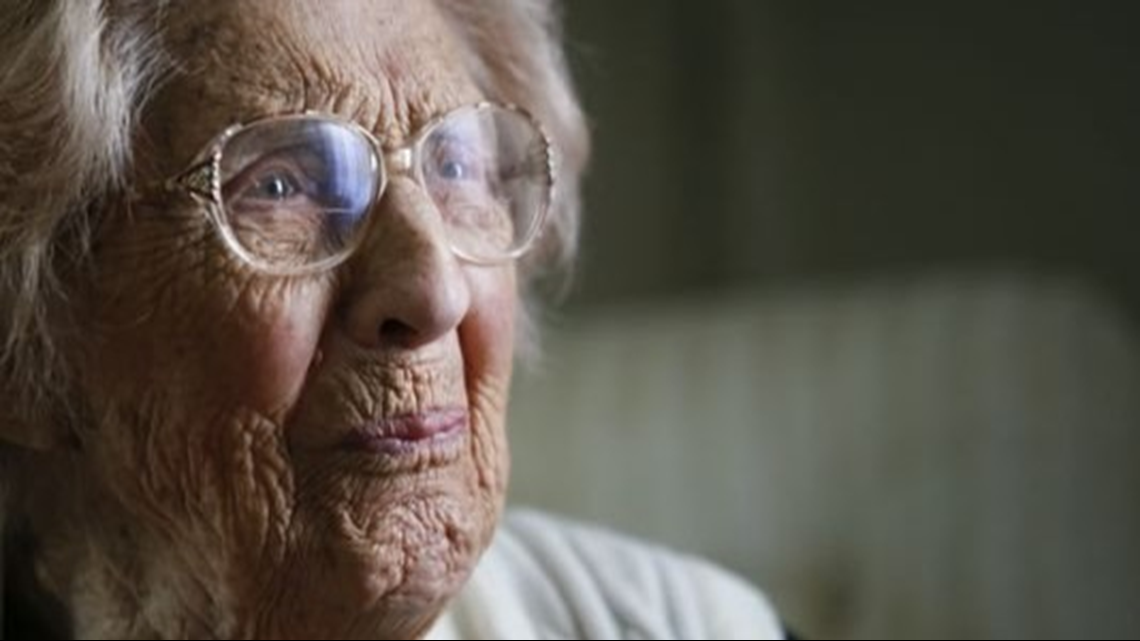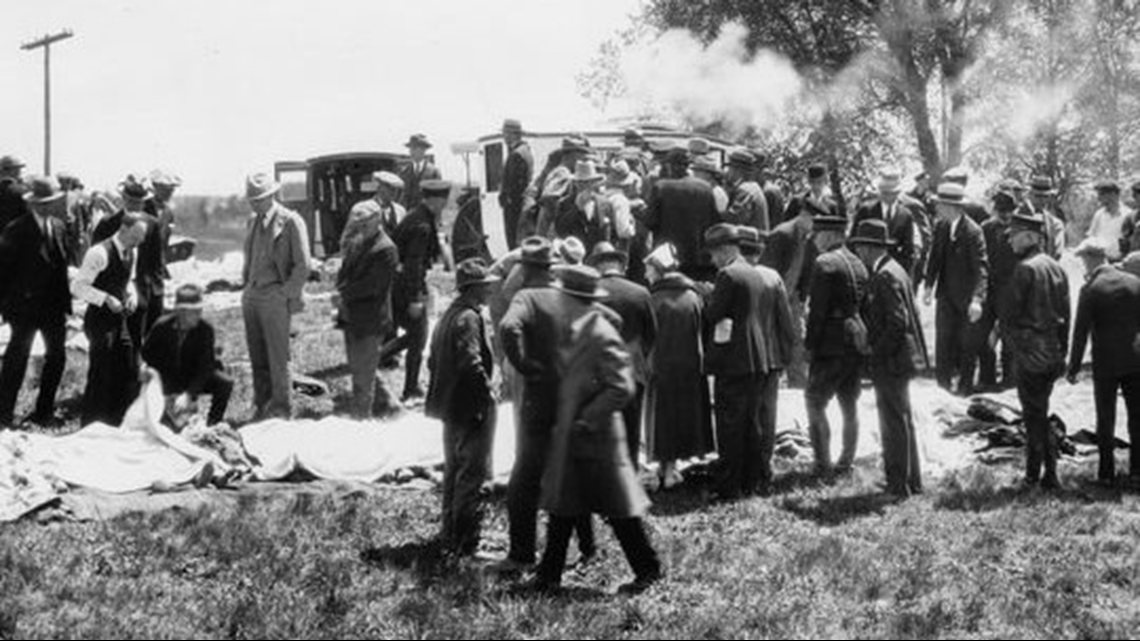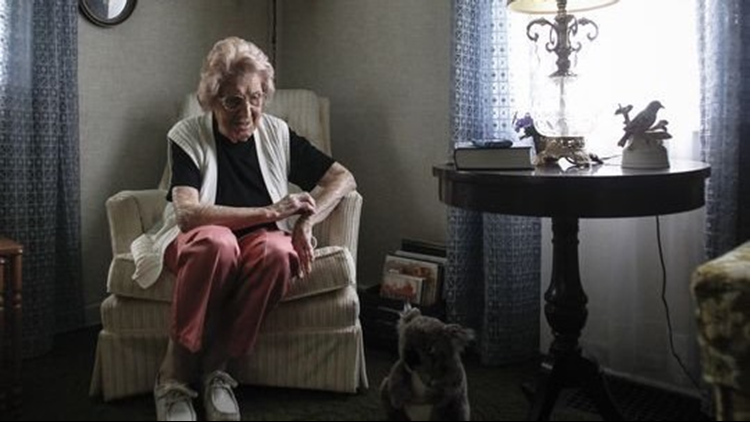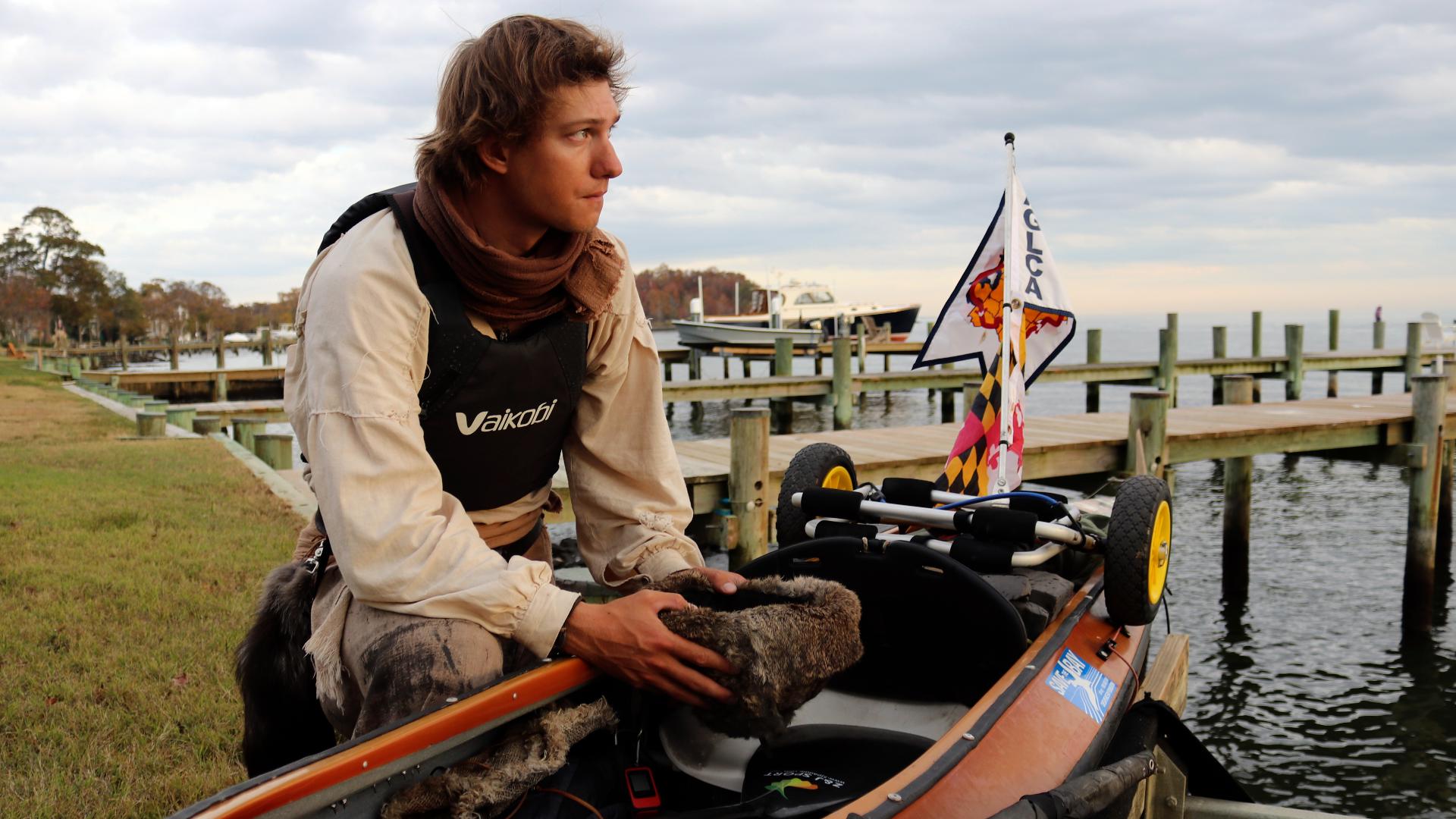BATH TOWNSHIP, Mich. — Editor's Note: Irene Dunham died at the age of 114 on May 1, 2022. The Lansing State Journal reported she was Michigan's oldest resident at the time of her death.
Irene Dunham survived the devastating influenza pandemic of 1918, the Great Depression and both World Wars. She's outlived her husband, Laurits, who died in 1972; a son, who died at the age of 80 just a few years ago; and a bout with colon cancer that doctors believed would take her.
Dunham, who was 109 at the time of the interview in 2017, also outlived the deadliest act of school violence in America.
Irene Babcock was 19 on May 18, 1927, a senior at Bath Consolidated School. It's quite possible the sore throat that kept her home that day saved her life.
On a Friday morning in May, she answered the door to her small, white house in north Lansing where she has lived for more than eight decades. She walks slowly and carefully now, helped by a walker.
From a chair in the corner of her living room with three high school class photos of her children hanging on the wall behind her, she recounted the "terrible day" when 38 classmates and six adults died and dozens of others were injured, including her brother.
The bombing at Bath Consolidated School likely took Andrew Kehoe months to plan and prepare for. The school board trustee and local farmer planted 1,000 pounds of dynamite in the basement of the building and, after the explosion that morning, parked his truck, loaded with more explosives, in front of what was left of the building. He detonated the vehicle, killing himself, the school superintendent, two adults and a child. Before leaving his farm, Kehoe had set fire to that too. The remains of his wife, Nellie, were found on the property.


Dunham has seldom given interviews about the bombing. For years she never talked about it.
By the 1970s, she had shared the story of arriving at the school shortly after the bombing with her family. At times, she said, it felt like the world forgot about Bath's tragedy.
But Dunham thinks about May 18, 1927, "quite often."
“I wish I could really tell you, dear, how awful it was," she said.
An 'awful boom'
"Unusual."
That's how Bruce Dunham, 71, describes his mother. She lives independently, still holds a driver’s license, reads the local paper daily and gardens in her yard whenever she gets the chance. She struggles to hear with the help of a hearing aid, but still keeps careful track of the mail and her bills, with Bruce's help.
"She's a very determined person," he said. "She's definitely independent, and she's sharp, sharp as a tack."
Dunham, then Irene Babcock, grew up on a 141-acre family farm located about four miles from Bath with her parents and eight younger siblings. Her father grew rye and corn.
She started attending Bath Consolidated School in seventh grade, previously walking a mile and a half to the Bath Country School every day with her siblings.
"It was just a nice building, you know?” she said of the school, built in 1922. "I liked all the teachers."
May 18, 1927, was the last day of class for students that school year, but Dunham wasn't feeling well.
“I had a bad sore throat, and the folks didn’t have me go to school," she said.
She was at home at 8:45 a.m. when the explosives sitting beneath the school went off. Her father was out plowing their fields.
"Mom and I heard an awful boom, and we knew it came from Bath, but we didn’t know what it was or anything, so we jumped in the old car and drove as fast as we could to see what it was," Dunham said.
They arrived to find that the north wing of the school, which housed classrooms for the school's youngest students, had collapsed. It was a pile of smoking rubble. Kehoe's truck had already exploded.


Emergency responders weren't on the scene yet, "because it had just happened,” she said.
Within minutes, Dunham said, a woman ran from her home nearby to the grass near the school, sunk to her knees and began to pray for the children inside.
"She was praying to God that her kids were alive, not hurt. It was bad."
"The postmaster was out in the yard, because there was so much going on,” after the first explosion. “Then when he (Kehoe) blew that car up, part of it hit him and killed him and injured a lot of other people," she said. "He (Kehoe) was in it, of course, and part of him was on the wire overhead hanging. I never could get over that."
Ambulances and emergency personnel arrived from as far away as Lansing.
“In no time at all though the place was surrounded with cars and everything. I’ve never seen so many ambulances and everything shut down," Dunham said. "It was a madhouse."
Several of Dunham's siblings were in the school during the blast. Lloyd, her brother, was in class at the other end of the school and lost a finger in the explosion.
“Parts of the building were flying,” she said. “That’s how a lot of people lost their lives.”
Her sister Eva, then 14, fled the building, jumping out a first-floor window with some classmates and running out into a field away from debris.
"I don’t know how long mom and I stayed there," Dunham said. "When we did go home, there was nothing we could do.”
'Living witness' to history
Dunham and most of her classmates knew Kehoe, who was a former township treasurer and school board member. Before the bombing, he had always seemed “real pleasant” when he greeted her in the school or out in the community.
"He always had nice words to say with all us older girls,” she said. “They kind of respected him, everybody did, in a way, but he didn’t like people on the school board. He didn’t like the superintendent.”
All told, Kehoe killed 44 people, including his wife, that day. Thirty-eight of the dead were children.
After the bombing, a hand-stenciled sign reading "Criminals are made, not born" was found hanging on a fence on Kehoe's property.
Arnie Bernstein, a Chicago writer, spent three years researching and writing the book "Bath Massacre: America's First School Bombing." He studied Kehoe's history and pieced together first-hand accounts of his life in Bath. He said it's not accurate to say Kehoe committed the mass murder-suicide simply because he was angry over increased property taxes that funded the school's construction or because he disliked fellow school board members or administrators.
Bernstein believes Kehoe was a psychopath, whose logic will never make sense to anyone. The crime was "meticulously" planned, he said, and dynamite he set off on his farm just months earlier on New Year's Eve was likely a kind of "dress rehearsal" for the school bombing.
"The common question I get is, 'Why did he do it?' and the frustrating answer is there isn't one," Bernstein said. "You and I have a switch in our head that says, 'Don't do this.' He didn't have that. That's the sad, damning reality of the whole thing."
Kehoe is buried in an unmarked grave.
'Keep on going'
The graduation ceremony for the class of 1927 didn’t happen that year or for many more after.
Irene Babcock married Laurits Dunham of Lansing shortly after the bombing. The ceremony had been planned before the attack, and she says she hesitated to go ahead with it. Family members convinced her to welcome the celebration in spite of the community tragedy.
“They went on with school in the fall,” she said. Classes were held in various downtown businesses, even a drug store. “They had to go on with the other grades. Even Floyd (her brother) finished up in a store in school.”
Irene got her diploma 50 years later when Bath High School’s 1977 graduating class invited the 1927 senior class to their ceremony.
“Fifty years later, she walked across the stage with the rest of the graduates, all these old folks who were still living,” said daughter-in-law Bonnie Dunham.
Dunham has nine grandchildren, 19 great-grandchildren and 23 great-great-grandchildren.
“I’m still hanging on. Kids come over once in a while to see if I’m still alive,” she joked.
In the years since the bombing, she’s read several books detailing the day.
“It reminds me of all of it," she said. "Maybe I shouldn’t have read it all myself. A lot of the little ones that were killed, I knew their parents, you know? It is hard. What can I do? What can anybody do? I do think about all those little kids. Most of them were buried in Pleasantville Cemetery in Bath. Think how old they’d be. They didn’t have a chance.”
Bruce Dunham said remembering the bombing is one way to honor the victims and the people who survived like his mother.
"That's what it's about," he said.
Witnesses, survivors and everyone else should focus on remembering the victims, Bernstein said. That includes Dunham, who declined to be interviewed for his book, but who sits with him every year when he visits Bath to attend an annual luncheon of school alumni. Bernstein believes she's the oldest living student who attended Bath Consolidated School at the time of the bombing. She's among just a handful still alive.
"I look at Irene, and I see the importance of memory," he said. "Of never forgetting. These people weren't characters in a book. They were her friends and family. She is a living witness to history."
Irene said moving forward has helped her cope.
“You just have to keep on going, you know? And do what you can do. That’s all I can do.”
►Make it easy to keep up to date with more stories like this. Download the 13 ON YOUR SIDE app now.
Have a news tip? Email news@13onyourside.com, visit our Facebook page or Twitter. Subscribe to our YouTube channel.



